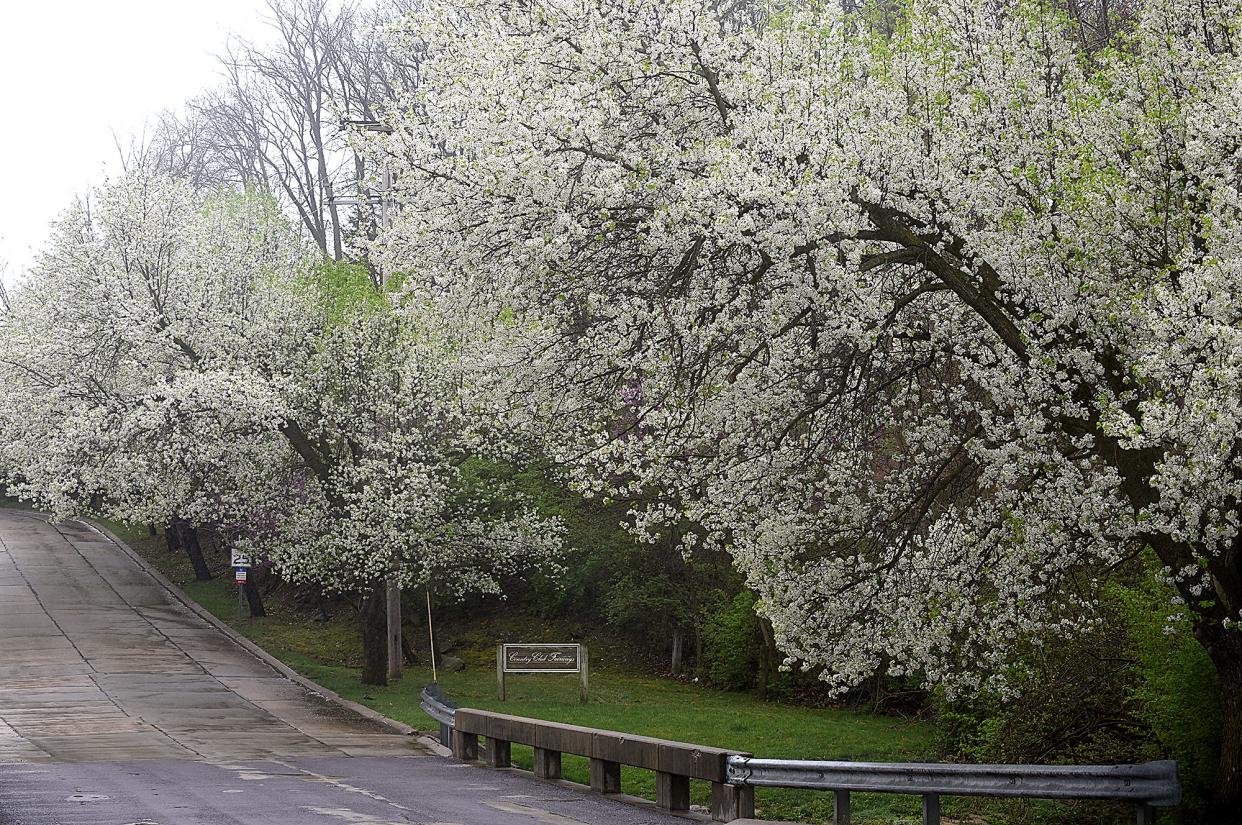How life found a way for the Bradford pear tree

As you drive around town this time of year, one of the first trees to bloom is the Bradford, or Callery, pear tree. They are covered in big white flowers and, with nothing else blooming yet, you can tell they are everywhere.
This reminds us of a popular line in the movie "Jurassic Park." One scientist scoffs at the idea that the park's dinosaurs have been biologically engineered so they will not be able to reproduce. The scientist does not have confidence that they really won't reproduce and says “Life will find a way.”
Indeed, the next movie found hatched dinosaur eggs in the wild showing that, indeed, life found a way.
While not as dangerous as reproducing dinosaurs, we have a similar story unfolding in our own backyards and parks and it involves the Bradford/Callery pear tree. Scientists once boasted they were safe here because they were genetically engineered to never reproduce.
Why scientists thought the Bradford pear was 'safe'
The Bradford pear tree is different though. Scientists brought over this species of tree to use as ornamental landscape trees in yards. The trees are not the fruit trees you think of when you think of pear trees. These trees only produce berries that we cannot eat.
They live freely in China and cause no problems at all. They grew fast and were resistant to many different pests. Best of all, the trees were not able to pollinate with other Callery pear trees and, therefore, could not reproduce. A plant cannot be invasive if it cannot reproduce.
Life will find a way
As usual, the plan did not quite work out as hoped. Callery pear trees indeed cannot pollinate themselves or be pollinated by the same type of tree.
However, mistakes were then made when people worked with genetics to create different lines of these pear trees in order to make a tree with even better characteristics.
The newly created lines of pear trees were similar enough to the original Callery pear trees, but different enough that they could now cross-pollinate with each other to create fertile seeds that would produce new, wild Callery pear trees.
These new, wild trees were capable of producing fertile seeds every year and, ever since then, this tree has taken over huge fields and forests. It has become a true invasive species.
Life found a way — and it is choking out other species that our natural ecosystem counts on to stay in balance.
Why are these trees a problem for us but are just fine in China? China has other trees and organisms that keep the Callery pear trees in check. We do not have those same competitors to keep our invading trees under control.
Problems with the pear trees
In addition to becoming invasive, this tree has other problems that make it unloved by homeowners who have them. The trees grow incredibly fast, which often means that the wood is very soft. Soft wood breaks in high winds and heavy snows. The majority of branches down after a spring or summer storm will be from Callery pear trees. This often costs owners far more than the original trees cost in tree removal services.
Another problem is the tree’s flowers. These flowers are one of the reasons people love these trees, but when the trees get bigger and have more flowers their owners realize that the flowers produce a smell that reminds people of rotting meat. Lovely!
Easy solutions we can take
Controlling invasive Callery pear trees is not as difficult as controlling invasive honeysuckle because the pear trees have not taken over as much land as honeysuckle yet.
The first steps in controlling this growing problem is to take out any Callery/Bradford pear trees on your property and stop buying the trees. Once you cut down the problem tree, replace it with a tree that is native to the area such as redbuds, oaks, maples, or dogwoods.
What happens if we don’t tackle the invasive species problem? Again, life will find a way. We will still have ecosystems — they just won’t be what we are used to. Most important, organisms that depend on native species will be disrupted and possibly replaced by other non-native species.
Mike Szydlowski is a science teacher and zoo facilitator at Jefferson STEAM School.
TIME FOR A POP QUIZ
What is an invasive species?
What is the same and what is different about invasive and non-native species?
Should farmers stop growing the pears that we eat? Why or why not?
Why are most of our invasive species not a problem in their original location?
If you find a store that is still selling ornamental pear trees (not fruit trees), what could you do to help the situation?
This article originally appeared on Columbia Daily Tribune: How life found a way for the Bradford pear tree

